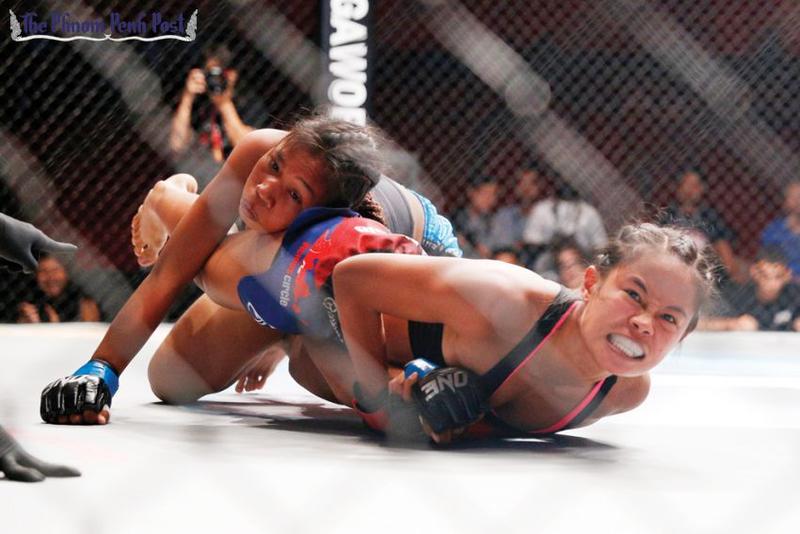Learn MMA Mixed Martial arts cage fight training UFC best top ten martial arts class in Mumbai

MMA is NOT necessarily a violent martial arts exercise as is seen in competitions. MMA can be a well-rounded method of fitness suitable for all ages & gender. It is the modern way of martial art practice using punching bags, speed balls & other equipment to relieve stress & build fitness gradually according to one\s own pace, stamina & body type. MMA can be a playful sport to build reflexes & agility. Ideal for corporate bench ridden individual. MMA includes striking arts (kick boxing), grappling arts (submission wrestling) & grab & hit arts (advanced matwork)
IN ADDITION TO REGULAR CLASSES BELOW WORKSHOP ALSO AVAILABLE
GENERAL KNOWLEDGE
Mixed martial arts (MMA) is a full-contact combat sport that allows striking and grappling, both standing and, on the ground, using techniques from various combat sports and martial arts.
During the early 20th century, various mixed-style contests took place throughout Japan, Taiwan, and in the countries of the Four Asian Tigers. In Brazil, there was the sport of Vale Tudo, in which fighters from various styles fought with little to no rules. The Gracie family was known to promote Vale Tudo matches as a way to promote their own Brazilian Jiu-Jitsu style. An early high-profile mixed martial arts bout was in 1951, fought between judoka Masahiko Kimura and Brazilian jiu jitsu founder Hélio Gracie in Brazil. In the West, the concept of combining elements of multiple martial arts was popularized by Bruce Lee’s Jeet Kune Do during the late 1960s to early 1970s. At CATS Mumbai we teach MMA in a systematic & scientific manner.
Victory
Victory in a match is normally gained either by the judges’ decision after an allotted amount of time has elapsed, a stoppage by the referee (for example if a competitor cannot defend himself intelligently) or the fight doctor (due to an injury), a submission, by a competitor’s cornerman throwing in the towel, or by knockout.
Knockout (KO): as soon as a fighter is unable to continue due to legal strikes, his opponent is declared the winner. As MMA rules allow submissions and ground and pound, the fight is stopped to prevent further injury to the fighter.
Submission: a fighter may admit defeat during a match by:
- a physical tap on the opponent’s body or mat/floor
- tapping verbally
Technical Submission: the referee stops the match when the fighter is caught in a submission hold and is in danger of being injured. This can occur when a fighter is choked unconscious, or when a bone has been broken in a submission hold (a broken arm due to a kimura, etc.)
Technical Knockout (TKO):
- Referee stoppage: The referee may stop a match in progress if:
- a fighter becomes dominant to the point where the opponent cannot intelligently defend themselves and is taking excessive damage as a result
- a fighter appears to be losing consciousness as he/she is being struck
- a fighter appears to have a significant injury such as a cut or a broken bone
Doctor Stoppage/Cut: the referee will call for a time out if a fighter’s ability to continue is in question as a result of apparent injuries, such as a large cut. The ring doctor will inspect the fighter and stop the match if the fighter is deemed unable to continue safely, rendering the opponent the winner. However, if the match is stopped as a result of an injury from illegal actions by the opponent, either a disqualification or no contest will be issued instead.
Corner stoppage: a fighter’s corner may announce defeat on the fighter’s behalf by throwing in the towel during the match in progress or between rounds. This is normally done when a fighter is being beaten to the point where it is dangerous and unnecessary to continue. In some cases, the fighter may be injured.
Retirement: a fighter is so dazed or exhausted that he/she cannot physically continue fighting. Usually occurs between rounds.
Decision: if the match goes the distance, then the outcome of the bout is determined by three judges. The judging criteria are organization-specific.
Forfeit: a fighter or their representative may forfeit a match prior to the beginning of the match, thereby losing the match.
Disqualification: a “warning” will be given when a fighter commits a foul or illegal action or does not follow the referee’s instruction. Three warnings will result in a disqualification. Moreover, if a fighter is unable to continue due to a deliberate illegal technique from his opponent, the opponent will be disqualified.
No Contest: in the event that both fighters commit a violation of the rules, or a fighter is unable to continue due to an injury from an accidental illegal technique, the match will be declared a “No Contest”, except in the case of a technical decision in the unified rules. A result can also be overturned to a no contest if the fighter that was originally victorious fails a post fight drug test for banned substances.
Technical decision: in the unified rules of MMA, if a fighter is unable to continue due to an accidental illegal technique late in the fight, a technical decision is rendered by the judges based on who is ahead on the judges’ scorecards at that time. In a three-round fight, two rounds must be completed for a technical decision to be awarded and in a five-round fight, three rounds must be completed.
Strategies
The techniques utilized in MMA (mixed martial arts) competition generally fall into two categories: striking techniques (such as kicks, knees, punches and elbows) and grappling techniques (such as clinch holds, pinning holds, submission holds, sweeps, takedowns and throws).
Sprawl-and-Brawl
We teach, that MMA has Sprawl-and-Brawl which is a stand-up fighting tactic that consists of effective stand-up striking, while avoiding ground fighting, typically by using sprawls to defend against takedowns, this is available at JKD Mumbai.
A Sprawl-and-Brawler is usually a boxer or kickboxer, Thai boxer or karate fighter who has trained in various styles of wrestling, judo, and/or sambo to avoid takedowns to keep the fight standing. This is a form which is heavily practiced in the amateur leagues.
These fighters will often study submission wrestling to avoid being forced into submission should they find themselves on the ground.
Ground-and-pound
MMA has Ground-and-pound which is a strategy consisting of taking an opponent to the ground using a takedown or throw, obtaining a top, or dominant grappling position, and then striking the opponent, primarily with fists, hammerfists, and elbows. Ground-and-pound is also used as a precursor to attempting submission holds.
The style is used by fighters well-versed in submission defence and skilled at takedowns. They take the fight to the ground, maintain a grappling position, and strike until their opponent submits or is knocked out.
Submission-Seeking
MMA has Submission-Seeking which is a reference to the strategy of taking an opponent to the ground using a takedown or throw and then applying a submission hold, forcing the opponent to submit. While grapplers will often work to attain dominant position, some may be more comfortable fighting from other positions. If a grappler finds themselves unable to force a takedown, they may resort to pulling guard, whereby they physically pull their opponent into a dominant position on the ground.
MMA has Submissions which are an essential part of many disciplines, most notably Brazilian Jiu-Jitsu, catch wrestling, judo, Sambo, and shootwrestling. Submission-based styles were popularized in the early UFC events by Royce Gracie and Ken Shamrock.
Score oriented fighting
Especially used by fighters with strong wrestling background when facing a highly skilled grappler, or by wrestlers who prefer stand-up fights. Usually fighters who adopt this strategy use takedowns only for scoring, allowing the adversary to stand up and continue the fight.
Clinch-Fighting
MMA has Clinch-Fighting which is a tactic consisting of using a clinch hold to prevent the opponent from moving away into more distant striking range, while also attempting takedowns and striking the opponent using knees, stomps, elbows, and punches. The clinch is often utilized by wrestlers and Judokas that have added components of the striking game (typically boxing), and Muay Thai fighters.
Wrestlers and Judoka may use clinch fighting as a way to neutralize the superior striking skills of a stand-up fighter or to prevent takedowns by a superior ground fighter.
MMA in general, fighters who cannot win fights through lightning offense, or are more suited to win fights in the later rounds or via decision are commonly known as grinders. Grinders aim to shut down their opponent’s game plan and chip away at them via clinching, smothering and ground-and-pound for most of the rounds.
At CATS Mumbai we follow the scientific methodology of teaching MMA.
